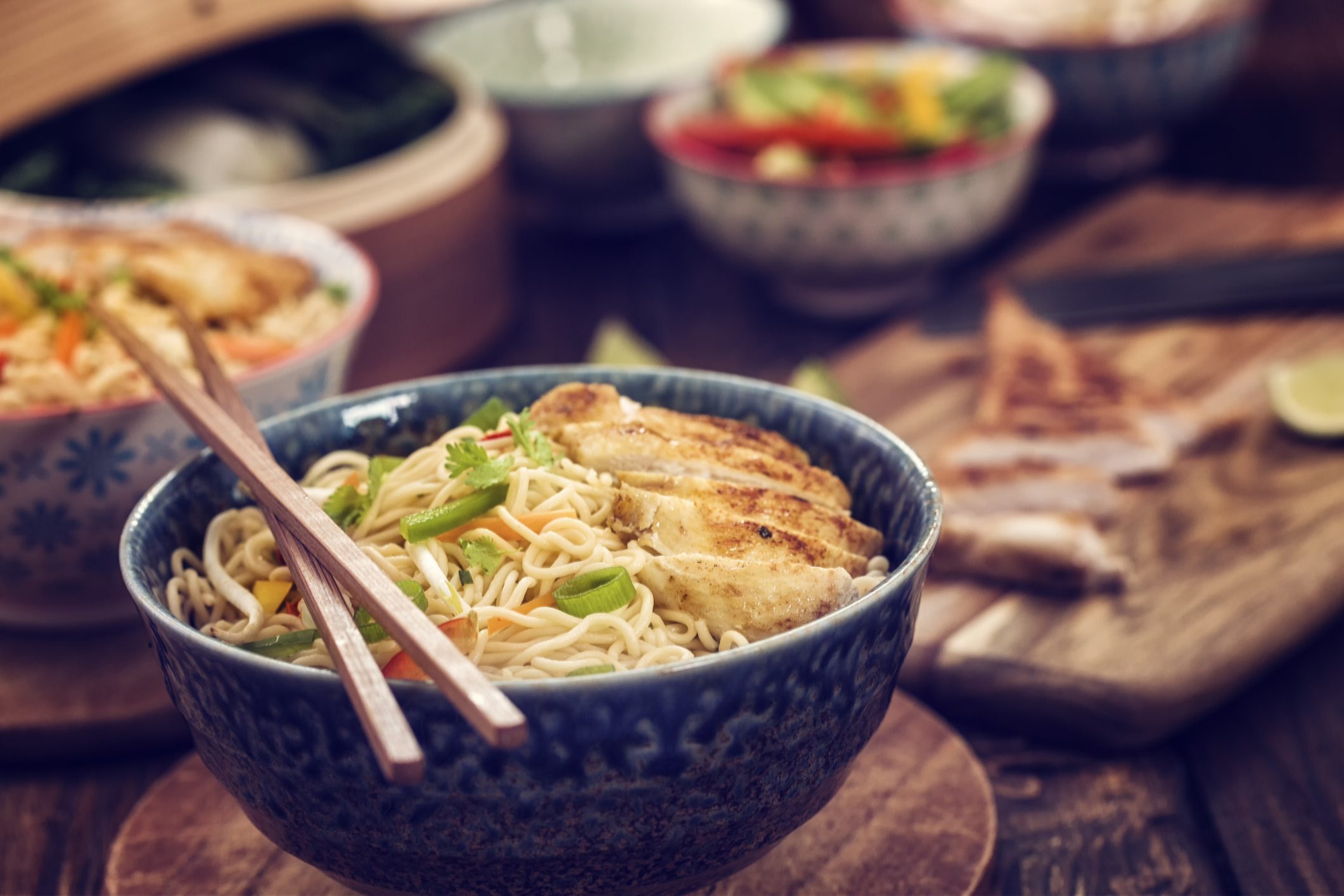Noodles: what they are, types and how to cook them
Noodles, also known as Chinese or Japanese spaghetti, are a dish of oriental cuisine with very ancient origins. Despite having the same shape as Italian spaghetti, noodles are quite another thing; in fact, they have only the elongated shape in common, and nothing more. So let's find out what noodles are, the types and how to cook them.
;Resize,width=742;)
Noodles, also known as Chinese or Japanese spaghetti, are a dish of oriental cuisine with very ancient origins. Despite having the same shape as Italian spaghetti, noodles are quite another thing; in fact, they have only the elongated shape in common, and nothing more. The noodles are in fact made, not only with different techniques, but also with different ingredients; according to the traditional recipe, flour is needed, which can range from rice one to soft wheat one, water and eggs. So let's find out what noodles are, the types and how to cook them.
What are noodles

Noodles were born in China more than 4,000 years ago and from there, thanks to migration, travel and trade, they then spread to the rest of the East: Thailand, Korea, Japan and the Philippines. Noodles are prepared with a dough made with water and any type of flour: rice one, durum wheat one, buckwheat one, mung bean one, corn one or seaweed one, to which eggs are added in some cases. Once the dough has been prepared, according to the different traditions, strings of pasta of different thicknesses are created cutting them directly from the sheet obtained.
The difference between Italian pasta and noodles is that the Italian pasta is made with durum wheat and is then drawn, while the noodles are prepared with different types of flour and are cut directly from the pastry sheet, made with little moisture. The other difference is in the way they are eaten; in fact, noodles are eaten with chopsticks and not with the classic cutlery.
Types of noodles: what they are and differences

Noodles can be identified in different types; as regards the Japanese noodles, they are firstly divided into wholemeal and non-wholemeal ones. However, at least 5 types of noodles can be identified based on the flours used, the thickness and the cooking method. Among these are the Soba, the best known in Western cuisine, made with buckwheat flour; they have a strong flavor, are thin and brown in color, and can be eaten both hot and cold together with meat or vegetables. Then there are the Udon, made with durum wheat flour, that are also thin and can be eaten both cold and hot; they are sold both fresh and dried. Somen are a type of very thin noodles that are usually eaten cold. Ramen, on the other hand, are wheat-based and yellow in color, thanks to the use of eggs. Ramen are instant food and they are sold pre-cooked and flavored; they are full-bodied and more solid and are consumed in meat broth, as soup, or with fish or both. Finally there are the Shirataki which are the finest noodles and are also among the lightest from a nutritional point of view.
In China and Southeast Asia, white noodles made with rice flour are mainly consumed, which are among the crumbliest ones and, although they are pre-cooked, they must still be cooked before being consumed. In Korea, on the other hand, the so-called soy noodles or mung bean noodles are consumed, which are more consistent than the Chinese ones, and which must be hydrated in boiling water before being used for the preparation of soups and spring rolls. The noodles made with egg are typical of China and Japan, both fresh and dried, and there are also wholemeal noodles, with a stronger taste and which have particular cooking times. In Thailand, noodles are wider and more porous and are among those that absorb sauces better.
How to cook noodles

Noodles are a very versatile food and can be cooked in many different ways; they can in fact be boiled in salted water and then sautéed in the wok with vegetables and soy sauce. They can then be fried in boiling oil and stir-fried with the ingredients of your choice. In fact, there is a lot of choice for seasonings; noodles can in fact be enjoyed with meat, fish, vegetables and they can be served hot, cold or as a soup.
;Resize,width=767;)
;Resize,width=712;)
;Resize,width=712;)
;Resize,width=712;)
